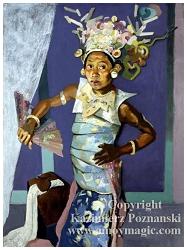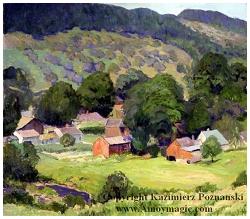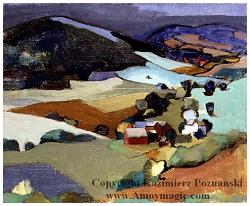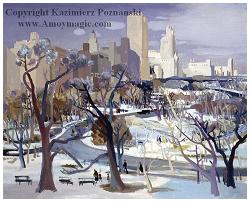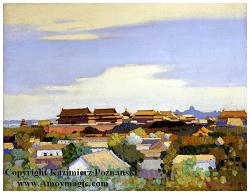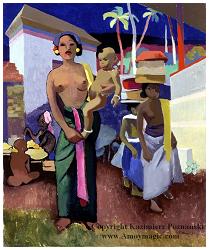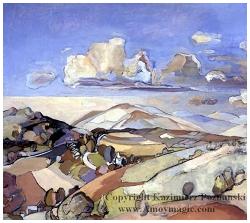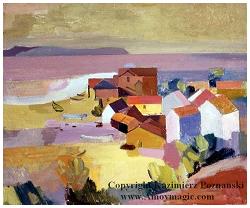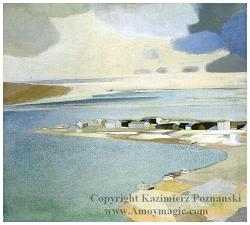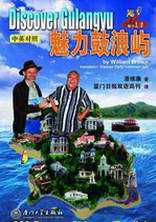![]() Click
to
Access
Click
to
Access
OUTSIDE China
![]() Click
to Access
Click
to Access
INSIDE
China ![]()
TRAVEL LINKS
![]() Xiamen
Xiamen
![]() Gulangyu
Gulangyu
![]() Jimei
Jimei
![]() Tong'an
Tong'an
![]() Jinmen
Jinmen
![]() Zhangzhou
Zhangzhou
![]() Quanzhou
Quanzhou
![]() Wuyi
Wuyi
![]() #1Fujian
Sites!
#1Fujian
Sites!
![]() Fujian
Foto Album
Fujian
Foto Album
![]() Books
on Fujian
Books
on Fujian
![]() Readers'Letters
Readers'Letters
![]() Ningde
Ningde
![]() Zhouning
Zhouning
![]() Longyan
Longyan
![]() Sanming
Sanming
![]() Putian
Putian
![]() Bridges
Bridges
![]() Travel
Info,
Travel
Info,
![]() Hakka
Roundhouses
Hakka
Roundhouses
![]() Travel
Agents
Travel
Agents
MISC. LINKS
![]() Amoy
People!
Amoy
People! ![]()
![]() Darwin
Driving
Darwin
Driving ![]()
![]() Amoy
Tigers
Amoy
Tigers
![]() Chinese
Inventions
Chinese
Inventions
![]() Tibet
in 80 Days!
Tibet
in 80 Days!![]()
![]() Dethroned!
Dethroned!
![]()
![]() Misc.Writings
Misc.Writings
![]() Latest
News
Latest
News
![]() Lord
of Opium
Lord
of Opium
![]() Back
to Main Page
Back
to Main Page
(Contact Dr. Kaz for more info)
![]() Order
Books
Order
Books![]() Xiamenguide
Forum
Xiamenguide
Forum 
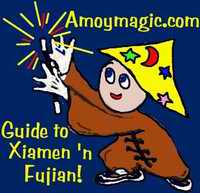
 "Happy
Places: Landscaping by Teng Hiok Chiu"
"Happy
Places: Landscaping by Teng Hiok Chiu"
by Prof. Kazimierz Z.Poznanski
Click Here
to E-mail Dr. Poznanski
Kazimierz Z. Poznanski, Professor
Jackson School of International Studies
PO Box 353 650
University of Washington
Seattle WA 98195
Note: Dr. Kazimierz Z. Poznanski, a professor  of
economics at the University of Washington, Seattle, has also taught at
Cornell and Northwestern Universities. He has published books with the
University of California-Berkeley and Cambridge University Press. A long-time
collector of paintings from the modernist period, Poznanski has spent
much of the last ten years focusing on Chinese painting,, particularly
the art of Chinese-American Teng Hiok Chiu (1903–1972)
of
economics at the University of Washington, Seattle, has also taught at
Cornell and Northwestern Universities. He has published books with the
University of California-Berkeley and Cambridge University Press. A long-time
collector of paintings from the modernist period, Poznanski has spent
much of the last ten years focusing on Chinese painting,, particularly
the art of Chinese-American Teng Hiok Chiu (1903–1972)
Note: All
text and images below, and on Prof. Kaz' page,
are from Prof. Kaz's research, and his book, "Path of the Sun--The
World of Teng Hiok Chiu, The Kazimierz Z. Poznanski Collection."
Click Thumbnails Below
(yellow-framed) for larger images
Click Here for Teng Hiok Chiu Biographical
Page
Click Here for "Chinese
Beauty," (about Prof. Kaz' artistic journey, with images of his
unique interpretation of Chinese art)
Click Here for "Feeling China: Art as
Jazz," by Dr. Kaz
[Note: Xiamen is now one of the planet's leading producers of original and reproduction oils! Check out this website: Amoy Paintings International!]
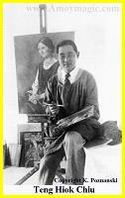 “Is
it extravagant hope to think that the artist may be the first to teach
mankind to think together and to follow the same truth and righteousness
by learning to appreciate the same beauty?” “Since I used
to play amidst the beautiful temples and pine trees or on the sandy beach
I have wanted to appreciate the best in nature and to be able to help
everyone else to do so. As soon as I got an opportunity to travel, I went
far and wide throughout my own country to see the best that China had
in paintings, architecture and scenery. This led me to a study of art,
but hitherto I had known nothing about its history, or of its practice,
except in Chinese writing, which is really painting.” “I found
I could not learn what I wanted from the artists of China itself, and
so I was driven to the West. My aim at first was just to acquire the technique
of Western art, but I found there was more in it than that. In England
and on the Continent of Europe a far wider vision of what art really is
has opened up before me. As I go forward I realize increasingly that neither
East nor West, and that some day there must be the Art of the New World
Civilization, to creation of which, as painter, I wish to contribute.
Art is a universal language which speaks to every human heart” Teng
Hiok Chiu
“Is
it extravagant hope to think that the artist may be the first to teach
mankind to think together and to follow the same truth and righteousness
by learning to appreciate the same beauty?” “Since I used
to play amidst the beautiful temples and pine trees or on the sandy beach
I have wanted to appreciate the best in nature and to be able to help
everyone else to do so. As soon as I got an opportunity to travel, I went
far and wide throughout my own country to see the best that China had
in paintings, architecture and scenery. This led me to a study of art,
but hitherto I had known nothing about its history, or of its practice,
except in Chinese writing, which is really painting.” “I found
I could not learn what I wanted from the artists of China itself, and
so I was driven to the West. My aim at first was just to acquire the technique
of Western art, but I found there was more in it than that. In England
and on the Continent of Europe a far wider vision of what art really is
has opened up before me. As I go forward I realize increasingly that neither
East nor West, and that some day there must be the Art of the New World
Civilization, to creation of which, as painter, I wish to contribute.
Art is a universal language which speaks to every human heart” Teng
Hiok Chiu
Back to top
Happy Places
by Dr. Kazimierz
Z. Poznanski
 To
me, the most special quality of Chiu’s art is that it is all about
happy places, filled with grace and beauty. It could be that this reflects
Chiu’s predisposition, but I would argue that the reason why the
painter almost always showed a sunny side is because he largely worked
in the Chinese art tradition. This is a tradition in which the entire
world is viewed as a happy place and where being alive means being happy.
The role of art is to project such truth and this is exactly what drove
Chiu’s work as a modernist painter.
To
me, the most special quality of Chiu’s art is that it is all about
happy places, filled with grace and beauty. It could be that this reflects
Chiu’s predisposition, but I would argue that the reason why the
painter almost always showed a sunny side is because he largely worked
in the Chinese art tradition. This is a tradition in which the entire
world is viewed as a happy place and where being alive means being happy.
The role of art is to project such truth and this is exactly what drove
Chiu’s work as a modernist painter.
The fact that there is substantial influence from the Chinese tradition
on Chiu’s art might initially seem counterintuitive, since, at first
examination, his work appears surprisingly Western. Importantly, Chiu
received his formal artistic training not in China but in the United States
and Europe. However, it is also true that Chiu obtained a thorough general
education in China and that he was exposed to many objects of Chinese
art in the house of his affluent parents. His was a very distinguished
and educated family of merchants. Typically, in such a family, each generation
would accumulate scrolls for viewing and numerous decorative pieces, such
as porcelain vases. Chiu himself owned such a collection, most likely
built upon some of the art objects taken from his family.
Back to top
It is also a fact that it was in the West that Chiu first began a serious
study of Chinese art, specifically in London. Immediately after his graduation
from the Royal Academy of Arts, he was offered a position by Lawrence
Binyon, the Curator of the Chinese Collection at the British Museum. He
spent almost two years under the personal mentorship of Binyon. During
this time he had the opportunity to see and learn about some of the best
Chinese paintings. One can hardly imagine a more appropriate introduction,
since Binyon was not only one of the foremost experts in the field but
also a passionate admirer of Chinese art tradition. He did not hesitate
to compare China with Greece and went even as far as saying that in some
ways the former exceeded the latter.
THE SPIRIT OF ART
That Chinese art is different from other types of art, including Western
art, stems from the fact that it developed a specific outlook on the world.
The Chinese perspective reaches back to the earliest stages of history,
where the world was conceptualized as nature, and where nature meant life.
The world is seen as a complex living system, and life is a dynamic process,
without either a definite beginning or a certain end. Life is an attribute
of everything because nature is a unity that cannot be broken up in any
place without instantly destroying all of it. In this tradition, it is
not only that people and animals have life, but also that rocks have life
as well. By continuously holding onto this basic message, Chinese worldview
has never become really modern.
Another important element in the Chinese worldview is seeing nature in
moral terms. Nature is believed to follow a certain moral order, through
which all of its components relate to each other and allow for the life
process to continue. In stating that moral order is the attribute of nature,
the Chinese worldview rejects the notion that the life-rules could be
invented either by mortal people or by immortal gods. For this reason,
the only legitimate way to arrive at a moral code that would be suitable
for people is to carefully examine nature. This role was ascribed to art,
so that art became also the source of moral guidance – it turned
into the art of living. In this way, art in China has slowly evolved into
the foremost vehicle for conveying to society their sense of morality.
Back to top
This specific role of art was codified several hundred years ago in the
late Sung dynasty and then elaborated upon under the Ming dynasty, when
the model of an artist, called “literati,” entered the tradition
(see: Sullivan, 1984; also Cotter, 2002). At this turning point the underlying
principles of the traditional Chinese art canon were specified as well.
The literati were scholars, collectors, and painters all in one person,
which aspired to give expression to the moral order through images and
poetry. This person, central to the whole working of a society, had to
be a scholar to fully understand the message, a collector to study the
message by examining the past, and a painter to use the brush to be a
teacher who conveys the principal moral message about nature.
Significantly, those working in the Chinese tradition do not hide their
mission but are quite explicit about their moral agenda, mixing words
of wisdom with images of the same wisdom. To make sure that the moral
message is not lost, artists use a portion of their painting to deliver
their primary lesson in some carefully crafted calligraphy, usually in
the form of a poem. The connection between the two is very intimate, since
the calligraphy – using the same medium, ink -- is seen as a form
of painting and indeed is such a form. Moreover, the whole painting, scroll
on paper, is seen as a form of poetry. with the difference being that,
unlike the written words of a poem, painting with its own visual images
is just a mute poetry (see: Sickman and Soper, 1968; also Chaves, 2000).
Back to top
The key moral message in Chinese tradition is that the world is a happy
place. What is meant by happiness is the full experience of life, as something
more precious, or rewarding than anything else. It is not the kind of
happiness that comes from having good time, or enjoying physical pleasures,
but rather the kind that comes from gaining an inner balance and finding
a communion with the nature – it is an affair of the heart not of
the body. As such, happiness, or being happy is within the reach of any
human being as part of the universal flow of life, or nature. Therefore,
the central message of Chinese tradition is that one could, and should,
make oneself happy by humbly embracing the splendid – and inherently
wise -- nature with its eternal rules and also with its diversity.
To say that the world is a happy place, as is the case with Chinese tradition,
does not mean, however, that it is an absolutely perfect place. To the
contrary, this world is largely imperfect; it is a happy place, with the
imperfections. Of all the imperfections, it may seem that getting older
and ultimately facing death is the one that might be considered the worst.
To the contrary, in the Chinese tradition the passing of time and the
parting with this world is seen as a part of life - both are accepted
as inevitable. It was none other than Chiu’s mentor, Binyon, who
stressed that given the above view, Chinese art is construed as a vehicle
for projecting the message of happiness. He would go further and say that
indeed to show the happy side of human beings is the only mission in art.
Furthermore, what defines a happy place in the Chinese tradition is the
presence of harmony. This is because life would not be possible without
harmony, which presumes good feelings – compassion -- between various
beings. In fact, life requires birth, and birth would be impossible without
the utmost good feeling without putting the life of another – new
-- being above your own, a choice to be made only out of the utmost good
feeling -- that of love. It is this sense of goodness, or even loving,
what makes the world a living unity, and it is this sense that truly represents
world’s vital spirit, as understood in Taoism . And, at its deepest
level, the purpose of Chinese art is to explain life is a product of a
vital spirit, which is about allowing good, or love, to rule.
Back to top
THE ART OF SPIRIT
This basic moral message, focused on the life-flow and life-rules, has
become an organizing principle for Chinese art. Not only is composition
subordinated to this message, but so is symbolism and the techniques,
all built into a system. In this respect, Chiu cannot
be considered a truly traditional Chinese artist, but rather as somebody
who, quite consciously, or deliberately,works within this tradition. While
he fits this tradition in terms of showing the world as a happy one, where
there is harmony, it is not the case hat he always uses every element
of the Chinese artistic vocabulary to deliver this message. Most of the
time Chiu would simply utilize some elements of this approach, and, even
then, he would transform them in a way that best fits his other needs.
The reason why Chiu concentrated almost exclusively on landscape was because,
in the Chinese tradition, this genre is found to be the most suitable
for expressing the moral truth. In this setting, artists are able to fully
express the notion that the world is about spirit – heaven -- and
matter – earth -- as two inseparable parts of the world. Heaven
is on earth, so that when earth is painted, so is heaven, but while earth
is visible haven is not visible, and for this reason Chinese painter cannot
simply be a photographer of a landscape. Such artist is, so to say, a
landscaper, a gardener who has to compose a landscape according to own
vision of heaven, one that creates meaningful spaces to transpose this
vision onto those that would find their work engaging enough to pause
for reflection.
And, no doubt, Chiu was a landscaper, and remarkably skillful, capable
of creating any illusion of universal harmony, often by depicting places
where mountains meet waters. It is possible that he would favor this setting
because it reminded him of Amoy Island, in South China, where he was born,
but it is also true that this type of setting has almost always been favored
throughout Chinese history. Mountain/water painting was eventually elevated
to an almost canonical form at the time when the concept of literati was
developed. This was to make sure that nature and life are even better
understood as a fusion of complementary elements. The reason being that
water symbolizes fertility or an ability to bring forth life, and mountains
are what water needs to fertilize it or, in other words, to make life
happen.
Chiu will frequently bring to his landscapes another element of traditional
painting, the empty spaces or voids. These voids, taking up large part
of scrolls, are introduced to take us to the hidden – the vital
spirit, but also to bring some sense of hope. They symbolize hope, since
what is painted is the past, with no change, and what is left unpainted
is the future, or change. Chiu employed these empty spaces on his own
terms by working with color, as with his sky, typically painted with whitish
blue with very little variation, sometimes using even half of the canvas.
A good example of his use of voids in a mountain-water composition is
Lake Lure, North Carolina. Here, it is not only the sky but mainly the
lake that is the void, although it is painted in a very soft and light
green.
In the literati approach to landscape, people would either be omitted
or given very little space, usually in a corner of the painting and blended
with the background. This is another element that interested Chiu. Figures
appear most often in his earlier paintings, as in the Moroccan series,
where massive architectural compositions, to be seen as a substitute for
landscape, are occasionally inhabited with small dwellers; as in his piece
Buildings, Morocco. The same pattern can be found in another series of
urban landscapes by Chiu, namely in his views of New York, where the influence
of his long-time friend and fellow artist Georgia O’Keeffee can
be easily detected. Filled with movement of people and cars, but also
built with stiff walls, South Central Park, New York is a very good illustration
here.
Back to top
When needing to show distance or depth, Chinese traditional artists resorted
to a simple device, namely, they broke up the flat areas by bringing in
horizontal registers rather than employing Western-type perspective strategies,
with a single focal point. It was a sign of master skills to fit as many
as possible such demarcation lines to gain the best visual effect; another
skill being the ability to play with multiple horizons, separating sky
from land, to increase the sense of illusion. One masterful illustration
of Chiu’s approach to constructing a sense of perspective in this
manner is Vermont Landscape. Here, Chiu introduces us to a tranquil and
charming place set within several, at least twenty different combinations
of horizontal registers forming the fields, valleys, and hills.
Regarding the use of light, Chiu generally stays away from using light
to create an impression of depth. Although his canvases are typically
saturated with light, with a sunny aura, his light source is seldom detectable.
This is a practice from the Chinese tradition that is meant to emphasize
the two-dimensionality, with an underlying flatness of the pictured objects.
The extensive use of sinuous lines intensifies this sense of flatness
in Chinese traditional artwork. The artists suggest, rather than describe
their landscapes through linear expressions rather than attending to modeling
the surfaces. Through linear allusions, artists communicate that it is
not the outer that is relevant, but rather what is inside; and in this
way they open an object to the inspection of the spirit .
Back to top
Chiu himself would often design his landscapes, or other scenes, with
the frequent use of fully exposed lyrical lines, as evidenced in his monumental
Central Pownall, Vermont, one of his latest works, and probably the most
prominent in this group. Here, a massive and iconic landscape is organized
through the use of dark lines, which, in fact, are charcoal marks from
the initial sketch executed by the artist. And, in accordance with the
Chinese tradition, he made certain that these exposed lines of black color
are full of life, meaning that they lack precision and tend not to be
finished. Since, as Chinese tradition posits, although equated with being
happy, life is full of imperfection and nothing is ever finished, and
painting, as a tribute to life itself, cannot be different.
The area where Chiu seemed to depart most from the Chinese tradition is
that, of course, he chose an oil over a water-based medium, but even in
this respect, it is a controlled departure. Trying to keep the Western
technique form interfering with his Chinese meanings, Chiu retained in
his landscape oils very much the quality of a watercolor or ink work of
the scroll artists. Except for many of his early works, most notably those
from Bali, when he painted in the company of two American artists, John
Sitton and Ken Johnston, Chiu stayed away from the heavy application of
paint, instead he used a diluted color and applying thin leyers. In this
way, he was able to gain almost the same sense of softness and transparency
on canvas as a traditional Chinese artist would accomplish on paper.
Back to top
There is hardly a better example of this watery look than Ullapool, Scotland,
one of the few paintings that Chiu took to a number of exhibitions marked
as not available for sale. This is surely one of his best paintings, one
that, despite its relatively early date, also happens to probably contain
more references to the Chinese artistic tradition than the majority of
his other works. It has an unmistakably Chinese mystique, showing a peaceful
and purified landscape with completely balanced space\s, and not surprisingly,
bringing mountains and water together, to show the dependent opposites,
and a sky to represent the nothingness. All of this extremely delicately
executed with a minimum amount of paint in pale shades and subdued colors,
and with only little color contrasts.
The fact that Chiu was extremely innovative, searching constantly for
the most effective execution, is witnessed by the enormous variation in
his work, though he would never lose his very own sense of artistic style.
With this impressive flexibility, seeking inspiration or suggestion from
various sources, he never forgot that, as a Chinese artist, he was to
use his tools primarily to deliver a moral message. This is why he took
us, in his landscapes, to the most pleasurable, calming, and reflective
spaces, which he landscaped with the clear intention of making us realize
how happy places in this world, or nature of ours are. And to tell us,
or whisper to us, how happy we all could be by accepting its rules, those
of a good disposition to other beings – respect and generosity.
Back to top
Bibliography:
Binyon, Laurence. The Spirit of Man in Asian Art. New York: Dover Publications, 1935.
Chaves, Jonathan. The Chinese Painter as Poet. China Institute Gallery, China Institute, New York, 2000.
Holland, Cotter. “In Old China’s Stormiest Times Nature was the Eye.” New York Times, September13, 2002.
Miyagawa, Torao, editor. Chinese Painting. New York: Weatherhill/Tankosha,
1983.
Rowley, George, Principles of Chinese Painting. Princeton University Press,
1959.
Salpeter, Harry. ”The Travels of Teng Chiu.” Esquire, March.1943.
Sickman, Lawrence and Alexander Soper. The Art and Architecture of China. New Haven, CT: Yale University Press, 1968.
Silbergeld, Jerome. Mind Landscape. The Paintings of C.C. Wang. Seattle: University of Washington Press, 1989.
Sullivan, Michael, The Arts of China, Berkeley: University of California
Press, 1984
Sze, Mai-Mai, “The Way of Chinese Painting. The Ideas and Technique”,
New York: Vintage Books, 1959
“A good traveler is one who does not know where
he is going to, and a perfect traveler does not know where he came from.”
Lin Yutang
Back to top
TRAVEL
LINKS  Favorite
Fujian Sites
Favorite
Fujian Sites  Fujian
Foto Album
Fujian
Foto Album  Xiamen
Xiamen
 Gulangyu
Gulangyu
 Fujian
Guides
Fujian
Guides  Quanzhou
Quanzhou
 Zhangzhou
Zhangzhou
 Longyan
Longyan
 Wuyi
Mtn
Wuyi
Mtn  Ningde
Ningde
 Putian
Putian
 Sanming
Sanming
 Zhouning
Zhouning
 Taimu
Mtn.
Taimu
Mtn.  Roundhouses
Roundhouses
 Bridges
Bridges
 Jiangxi
Jiangxi
 Guilin
Guilin
 Order
Books
Order
Books
 Readers'
Letters
Readers'
Letters
Last Updated: May 2007
![]()
DAILY
LINKS
![]() FAQs
Questions?
FAQs
Questions?
![]() Real
Estate
Real
Estate
![]() Shopping
Shopping
![]() Maps
Maps
![]() Bookstores
Bookstores
![]() Trains
Trains
![]() Busses
Busses
![]() Car
Rental
Car
Rental
![]() Hotels
Hotels
![]() News
(CT)
News
(CT)
![]() Medical
& Dental
Medical
& Dental
![]() YMCA
Volunteer!
YMCA
Volunteer! ![]()
![]() XICF
Fellowship
XICF
Fellowship
![]() Churches
Churches
![]()
![]()
![]() Temples
Temples![]()
![]() Mosque
Mosque
![]() Expat
Groups
Expat
Groups
![]() Maids
Maids
![]() Phone
#s
Phone
#s
EDUCATION
![]() Xiamen
University
Xiamen
University
![]() XIS(Int'l
School)
XIS(Int'l
School)
![]() Study
Mandarin
Study
Mandarin
![]() CSP(China
Studies)
CSP(China
Studies)
![]() Library
Library
![]() Museums
Museums
![]() History
History
DINING ![]() Tea
Houses
Tea
Houses
![]() Restaurants
Restaurants
![]() Asian
Asian
![]() Veggie
Veggie
![]() Junk
Food
Junk
Food
![]() Chinese
Chinese
![]() Italian
Italian
![]() International
International![]()
![]() Visas
4 aliens
Visas
4 aliens
RECREATION
![]() Massage!
Massage!
![]() Beaches
Beaches
![]() Fly
Kites
Fly
Kites
![]() Sports
Sports
![]() Boardwalk
Boardwalk
![]() Parks
Parks
![]() Pets
Pets
![]() Birdwatching
Birdwatching
![]() Kung
Fu
Kung
Fu ![]() Hiking
Hiking
![]() Music
Events
Music
Events
![]() Cinema
Cinema
![]() Festival&Culture
Festival&Culture
![]() Humor&
Humor&![]() Fun
Fotos
Fun
Fotos![]()
BUSINESS
![]() Doing
Business
Doing
Business
![]() Jobs!(teach/work)
Jobs!(teach/work)
![]() Hire
Workers
Hire
Workers
![]() Foreign
Companies
Foreign
Companies
![]() CIFIT
(Trade Fair)
CIFIT
(Trade Fair)
![]() MTS(Translation)
MTS(Translation)
![]()
Back to Top
